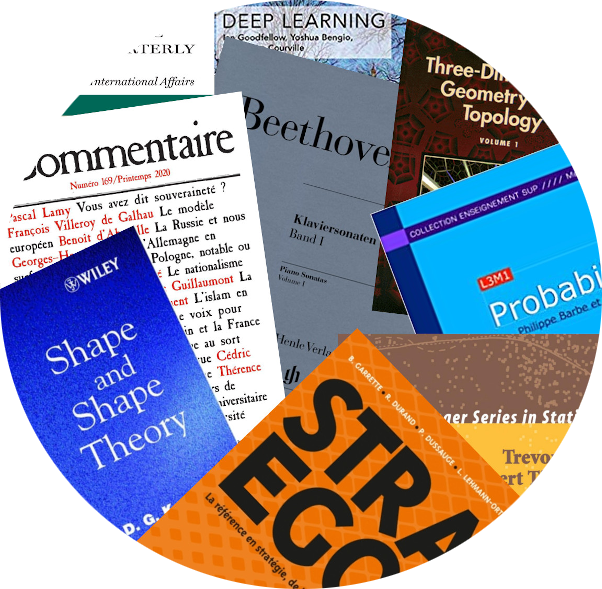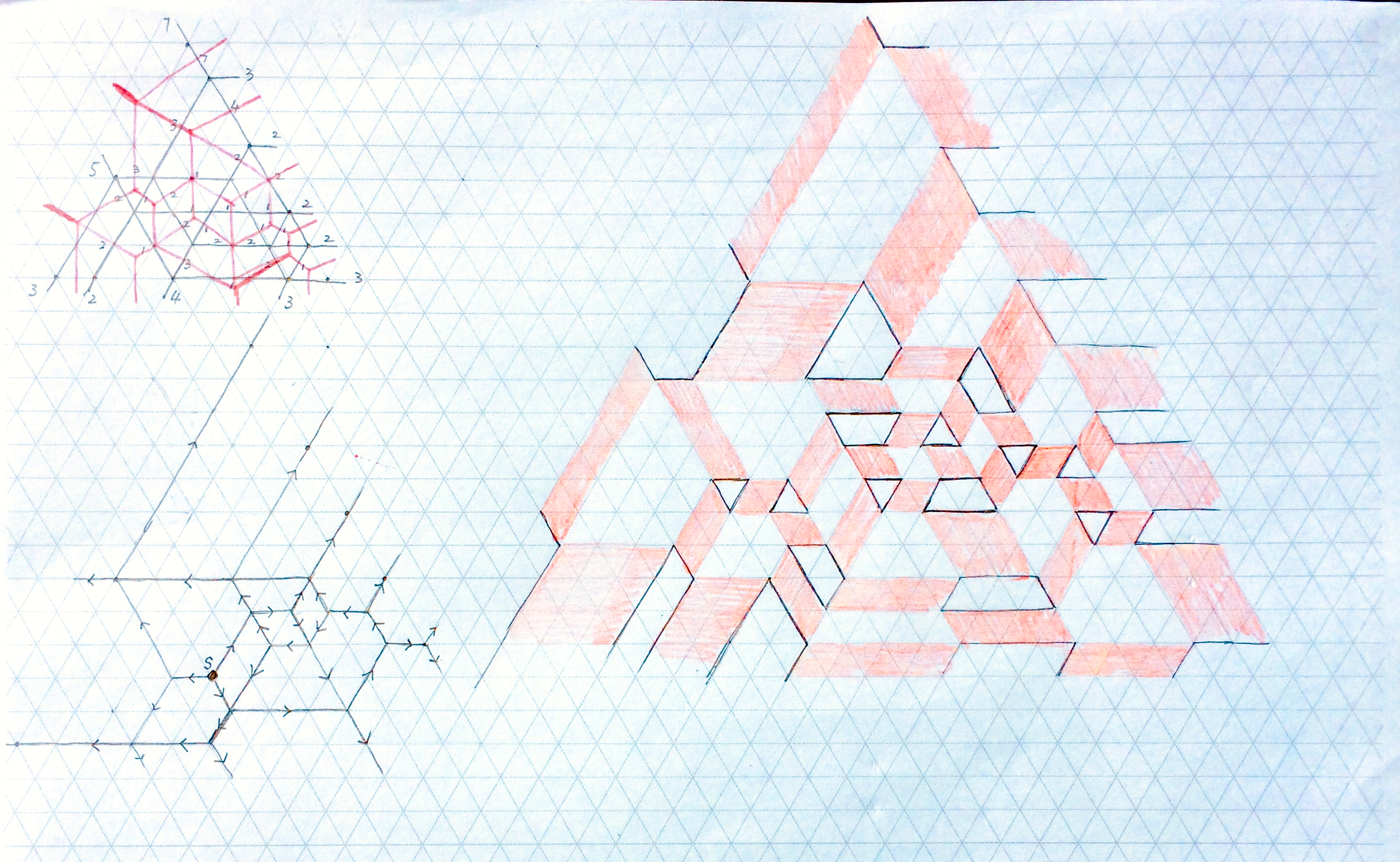 Philippe Barbe
Philippe Barbe

|
Should you hire a professional Mathematician?
|
What do Mathematicians actually do and why, as a business person, should you care?
Not because you need their mathematics, few businesses really do.
What you might need, once you understand what they can and cannot bring to your business, is the mind of a Mathematician.
This article and the next ones not only explores what doing mathematics entails, but will give you some appreciation of how mathematicians think to help you determine if you should hire one in you company.
Ask a Mathematician: “What do you do?” and you will likely hear the special expertise by which they define themselves…. “I am a topologist.” “I am a differential geometer.” “I’m a probabilist.”
All true but not helpful. The simple answer: A professional Mathematician is someone who makes their living doing mathematics.
But what is doing mathematics? And what is mathematics?
What is mathematics?
According to Merriam-Webster it’s (with parenthetical comments removed): the science of numbers and their operations […], interrelations, combinations, generalizations, and abstractions and of space […] configurations and their structure, measurement, transformations, and generalizations.
Not a bad definition, for numbers and their operations are certainly at the core of mathematics, as is the need to measure various quantities.
But for many Mathematicians such a definition does not give a good description of what they do, because it focuses too much on numbers, which for most people means 1, 2, 3,… In terms of how it might be perceived, it is very much like defining grammar as the study of the structure and evolution of… prehistorical drawing. Yes, there is a connection between modern English grammar and these prehistorical drawings, but it is far from direct and obvious.
Dictionary.com says it’s: the systematic treatment of magnitude, relationships between figures and forms, and relations between quantities expressed symbolically.
This definition focuses on geometry through figures and forms, quantities and symbols. What are these figures, these forms, these symbols? Isn’t that what decipherment (a part of philology), or decryption (a part of cryptography) are?
While the Merriam-Webster definition appears too narrow, the Random House one seems overly broad.
Wikipedia’s entry opens with… Mathematics has no generally accepted definition! That’s about right! My personal library has about 2,000 math books and I can’t define it.
Understanding part of the world through mathematical objects
The general view is that many professional Mathematicians work in universities where “doing” mathematics results in publishing articles in academic journals like this.
Of course simply solving a specific equation like 3x =123,123,123 … what is x? ( 41,041,041) won’t get published as it is not new mathematics, even though this specific equation may not have been seen before. Banging on a stone doesn’t make you a stone carver and applying a formula to solve an equation in isolation isn’t mathematics as it brings no new understanding.
Mathematics education in the US is often about applying the right formula. This is unfortunate, because there is little further from actually doing mathematics than applying formulas. Sure Mathematicians use formulas, as the stone carver uses a chisel but the work is not about the chisel.
When a Mathematician is trying to say something about a solution to a problem using an equation, the interest is in being able to better understand what governs that equation: in what aspect that equation is different than others that may be related so that the solutions share or do not share some similarities?
Formulas are ways to express mathematical ideas. Applying them mechanically is not understanding, and consequently is not doing mathematics. Lawyers write, but they are not writers, and writing legalese doesn’t make you a lawyer practicing law.
The danger of using equations when writing about mathematics is that most people associate mathematics with equations. And, equations have some specific solution. Mathematics seems more about understanding properties of mathematical objects than solving equations.
Given that many Mathematicians produce articles, the central theme of which are theorems, it is tempting to conclude that doing mathematics is proving theorems. This is a superficial view, defining the activity by what it produces, by its outcome.
My experience as a professional Mathematician, is that doing mathematics is about trying to understand a part of the world that can be represented by mathematical objects, expressed through a text and possibly some formulas.
What is a mathematical object is unclear. Maybe a useful abstraction, a rich abstraction on which one can say a lot of things, that is useful to construct and understand other abstractions, and ultimately the physical reality around us.
Mathematical abstractions
The connection of mathematics to the physical world can be quite remote, although it exists at least through the history of the subject.
Consider how a ship in the middle of the ocean is connected to the land.
It started from a harbor, bound for another harbor slowly moving away from land until the ship is out of sight from land and the land is out of sight from the ship. Yet, the land is still there in the mind of the crew, in the form of these harbors that connect them to the land.
For many non-Mathematicians, looking at mathematics and Mathematicians is like being transported on the ship, looking at the sea all around, not knowing where one is and wondering where all this is going!
All the while, in the middle of the ocean there is the continuation of the land… the sea floor… hidden and unreachable. The ship is there to traverse this hidden part of the land that connects the visible land, and so are Mathematicians.
Mathematicians share with sailors the desire to reach a destination. Theorems are proved through proofs, and proofs are bound by the linearity of writing, just as a ship is constrained by having to move forward in a continuous fashion.
However, this is not the way theorems are found.
Mathematics is written very much in the reverse order from which it was created, which is in part, why it is hard to read. That inversion tends to hide the intuition.
The linearity is imposed both by our linear way of communicating in writing, but more importantly by the need to layout the logical arguments which explain why a theorem is true.
These logical arguments, when complicated enough, have to be given in some order, the next argument often relying on previous ones. Those arguments make a proof… an explanation of why a statement is true… following implacable logical rules that are independent of language and culture, even though they are expressed in a particular language out of necessity.
Theorems often start with an intuition that something must be true. Thus, a goal is set, which can be more or less precise. As the Mathematician tries to prove that something, the goal gets refined. Some notions may appear, following a utilitarian principle: if this concept allows to make progress, it may be worth isolating it in the form of a definition. This is how mathematical objects are created.
Mathematicians often start with examples, to get some intuition. In that aspect mathematics is inductive, starting with very few cases, sometimes as few as 1 or 2, and imagining how an observation on these few cases can hold true in a far broader context. This is how conjectures are made.
Proofs however are deductive. A theorem is nothing but a conjecture that has been proven true.
The making of theorems through conjectures and proofs has practical consequences on how Mathematicians think: they often set a lose endpoint in form of a conjecture, and fill the gap to get to that point, adjusting the objective as they go.
In business parlance this translates to having vision and agility, with the ability to incrementalize their work. Valuable business skills in a world of “MVP”, “Agile”, “fail fast” and “fire bullets before cannonballs”!
Doing mathematics is a social activity
Mathematicians earn their chops by proving difficult theorems. If an outstanding Mathematician proves in a weekend what others had tried to prove for over a year, there is no offense, no humiliation for those who tried in vain. Most are quite happy to know one way or another if something is true or false.
But that ease of understanding a difficult situation creates a strong sense of hierarchy. At least on that specific problem that person is demonstrably more capable than others.
Success in mathematics is very tangible.
For this reason Mathematicians accept hierarchy, as long as it is based on demonstrated ability. They respect legitimate authority based on merit and achievements, but can be subversive otherwise.
Most Mathematicians work in collaboration, with roughly 60% of all mathematical papers having at least 2 authors yet very few having more than 4. Understanding deeply why something is true or false is a very personal activity. Ultimately it is completely in your brain, and you are your own limit. Working with a collaborator is also intensely personal but collaborators typically bring two things: knowledge that one does not have, and stimulation of the imagination. A collaborator thinks differently, has different ideas, and the exchange of ideas stimulates imagination which is essential to inventing a solution to a perplexing problem.
Mathematicians are generous, they easily give ideas to others and co-authors contribute significantly, reflecting the intensely personal aspect of thinking.
The collaborative aspect of mathematics makes Mathematicians open-minded to new ideas and different ways of doing something. They are quite adept at picking up new ways of thinking. Struggling with a complex problem, they welcome solutions no matter the source!
Pivotal aesthetic
With enough knowledge and the right point of view the most complicated problems often appear simple.
Mathematical “proofs” that spans several dozen of pages can often be summarized in a couple of sentences by those who understand them well.
Like music, where a theme and a harmonic progression are often the foundation of a piece, a mathematical proof is often built around a couple of simple ideas. And, like music, comes with the caveat that seeing that simplicity requires a considerable initiation.
Because of this simplicity, Mathematicians have a deep sense of aesthetic.
A beautiful proof often consists of an observation which is obvious once you see it, making the proof very simple to create. It’s like a revelation where you are told a one sentence secret, and suddenly an entire world appears, full of meaning.
This appreciation for aesthetic, which is a characteristic of Mathematicians, stems from their ability to find in a highly complex situation, a different viewpoint that will transform it into a simple one. Doing mathematics is very much about the ability to change one’s point of view. Hence, Mathematicians are very adaptable, and pivot easily when it comes to their craft.
From a business perspective, they are able to pivot while staying focused… a useful combination!